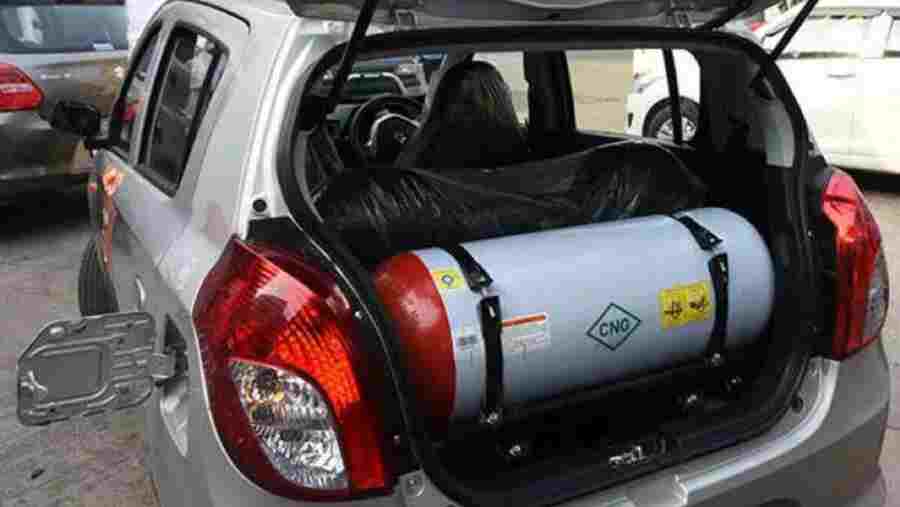Compressed natural gas (CNG) is a type of fuel mostly made up of methane (a natural gas). It is stored under high pressure, taking up much less space than it would in normal conditions. This gas is kept in strong, hard containers shaped like cylinders (long, round shapes) or spheres (balls) to store it safely.
Background
The government of Nigeria recently launched the Presidential Compressed Natural Gas Initiative (PCNGI) not only to convince Nigerians about the benefits of using CNG-powered vehicles, but to also offer support, give out CNG kits, and assist in the conversion process for commercial vehicles at designated locations at major cities across Nigeria.
However, not everybody in Nigeria and other developing countries knows how CNG works and its benefits over the use of petrol. I have put this article together in a simplified format, reducing the technical words so that every average Nigerian driver or car owner on the street will understand.
A Brief History of CNG
CNG has been around for a long time as far back as the 1850s, when gas was used in the first internal combustion engines in France. During World War I, natural gas started being used as a fuel for transportation. In the 1960s, there was even an attempt to use ships to transport CNG, but it was too expensive at the time.
Since then, many improvements have been made to reduce the cost of storing and transporting CNG, making it a more practical and affordable option today.
How is CNG Used in Vehicles?
CNG can be used in vehicles that run on petrol after they are modified or in vehicles that are built to use CNG from the start. These vehicles can run on CNG alone, use both CNG and petrol (dual-fuel system), or switch between the two. CNG can replace petrol, diesel, and Liquefied Petroleum Gas (LPG), says ELGAS in an article titled, “CNG – Methane vs LPG – Compressed Natural Gas.”
One big advantage of CNG is that when it burns, it produces fewer harmful gasses than petrol, diesel, or LPG. In case of a leak, CNG is less dangerous because it is lighter than air and quickly disperses, unlike petrol or diesel, which can cause fires or pollution.
CNG can also be made from biogas, which comes from the breakdown of organic materials like waste in a landfill.
Where is CNG Used?
Due to rising fuel costs and concerns about the environment, CNG has become popular in vehicles like auto rickshaws, pickup trucks, buses, and even trains. Many governments such as Nigeria as recently announced by the Bola Tinubu-led government and transportation services are switching to CNG because it’s cheaper (N230/kg) and better for the environment.
Why Isn’t CNG Used Everywhere?
The biggest obstacle to using CNG more widely is the cost of installing the fuel storage containers in vehicles. However, over time, this cost has come down, especially with the development of more affordable and reliable CNG cylinders (like Type 1 and Type 2). These cylinders are now being produced in many countries for people looking to convert their petrol or diesel vehicles to CNG.
How Efficient is CNG?
CNG has less energy per litre than petrol or diesel. It takes about twice as much CNG to get the same energy as petrol. However, because CNG is cheaper and burns cleaner, it’s still a popular choice.
CNG Project in Nigeria
Nigeria’s PCNGI is building on the project that was started in 2010 by NIPCO, when the oil company started the project in Benin City, Edo State, South South, Nigeria.
The company’s subsidiary NIPCO Gas Limited started building CNG stations and by the end of 2020, it had built seven CNG stations with over 7,000 vehicles running on the product.
Some major companies are already switching to CNG to power their machines and trucks. And it is hoped that PCNGI by Nigeria’s government will drive the adoption across the country.
CNG Usage Worldwide
As of 2023, about 23 million vehicles were running on natural gas, according to the U.S Alternative Fuels Data Centre.
Of the countries with the highest number of natural gas vehicles (NGVs), 2011 data put Iran on the number 1 spot with 4.07 million NGVs, followed by Pakistan with 2.85 million, and Argentina with 2.07 million NGVs.
From the available stats, the Asia-Pacific region leads the way followed by Latin America.
Several car manufacturers, such as Fiat, Opel/General Motors, Peugeot, Volkswagen, Toyota, Honda, Maruti Suzuki, Hyundai, and Tata Motors, sell vehicles that can run on both CNG and petrol (dual-fuel cars). For example, in 2006, Fiat introduced the Fiat Siena Tetrafuel in Brazil, which can run on different types of fuel, including CNG, ethanol, and petrol.
Converting Petrol Cars to CNG
Any petrol car can be modified to run on both CNG and petrol. This is called a dual-fuel vehicle. Special shops can install a CNG conversion kit, which includes a CNG tank, piping, and a system to inject CNG into the engine.
The conversion can cost up to N600,000 or more. On September 17, 2024, an expert in Climate Finance, Obi Ugochukwu, told ARISE NEWS that unless vehicle owners enjoy free conversion by the federal government, one might spend between N750,000 to N1 million for conversion.
So it is usually done for vehicles that travel long distances regularly. Despite the cost, CNG is about 50% cheaper than petrol and produces up to 90% less pollution.
CNG in Trains
Some trains also run on CNG instead of diesel. For example, the Napa Valley Wine Train in the US was converted to run on CNG back in 2002, and the system was improved in 2008.
The train now uses a computer-controlled fuel system, making it more efficient. In Peru, a railway company called Ferrocarril Central Andino has been using a CNG-powered train on its freight lines since 2005.
Most CNG trains are originally diesel-electric locomotives that have been converted to use CNG instead of diesel. These trains are more fuel-efficient because they only use CNG when needed and can save money because CNG is cheaper than diesel.
Transporting Natural Gas
CNG is also used to transport natural gas over short distances by sea, using special ships designed to carry the gas. For very short distances, undersea pipelines are usually cheaper. For long distances, LNG (Liquefied Natural Gas) is often a more cost-effective option.
Comparison
Some people often mistake CNG for Liquefied Natural Gas (LNG). Both are types of natural gas, but they are stored differently.
CNG is kept at room temperature but under very high pressure, while LNG is stored at low temperatures with less pressure. Because of this, LNG is a liquid, and CNG is not—it remains a dense, almost gas-like substance.
Why Choose CNG?
CNG is cheaper to produce and store compared to LNG because it doesn’t need an expensive cooling process or special storage tanks. However, it takes up more space to store the same amount of energy as petrol (gasoline), and the pressure required to store CNG is extremely high, between 3,000 and 4,000 psi (a lot higher than your car tyre’s pressure) as outlined in the challenges of using CNG here.
LNG is typically used for transporting natural gas over long distances by ships, trains, or pipelines. Once it reaches its destination, it’s often converted to CNG for distribution to users like drivers.
New Storage Methods
There’s also a new experimental way of storing natural gas called ANG (Adsorbed Natural Gas). With ANG, natural gas is stored at a much lower pressure (about 500 psi) in special sponge-like materials, such as carbon.
ANG allows vehicles to be filled directly from regular gas lines without needing extra compression. Plus, the tanks for ANG can be lighter and smaller than those for CNG.
In some cases, ANG and CNG technologies are combined to increase the amount of gas that can be stored in a vehicle’s tank. By using materials like activated carbon inside the tank, the storage capacity is enhanced.
Conclusion
From this, you can see the benefits of running on CNG outweigh its challenges. However, the choice is yours. For the adoption of CNG in Nigeria to be beneficial to all, the government needs to put the facilities in place or partner heavily with fuel stations along highways.


